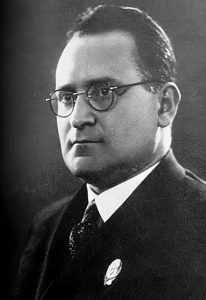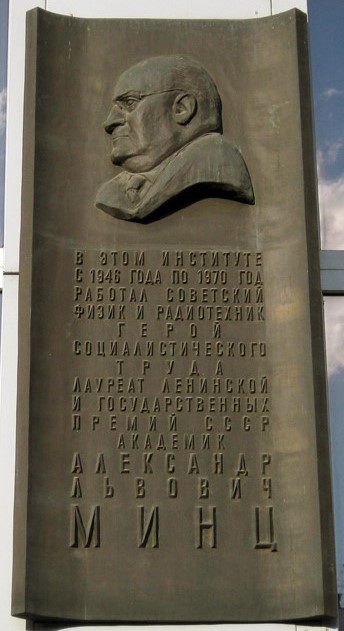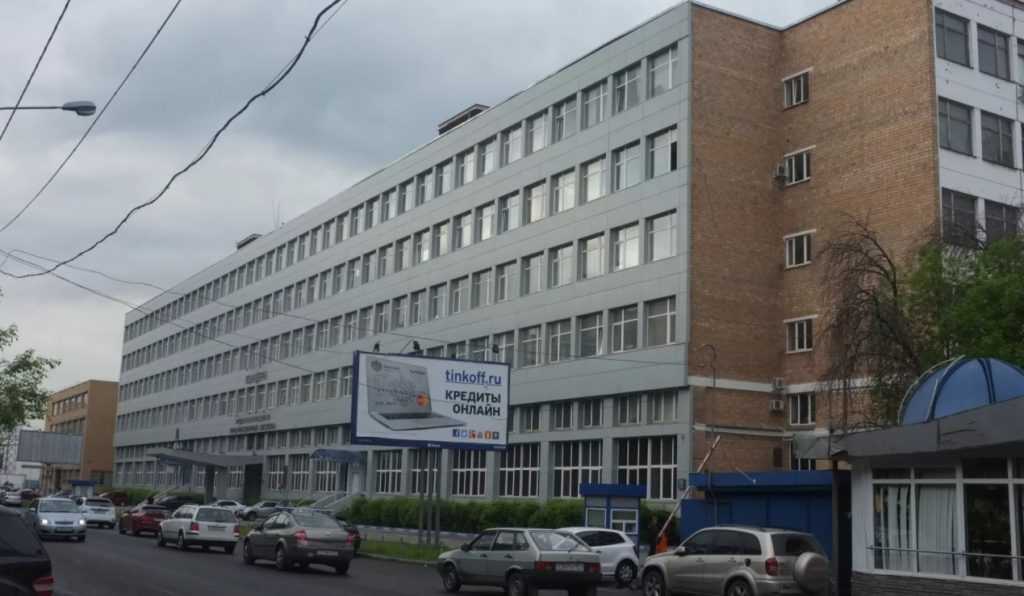Aleksander Lvovich
Mints
1894-1974

Aleksander Lvovich Mints was the Head of the Radio Engineering Laboratory of the USSR Academy of Sciences, Corresponding member of the USSR Academy of Sciences. He was born in Rostov-on-Don. He was the son of a major entrepreneur, the owner of a factory. In 1913 he graduated with a gold medal from the 2nd Rostov N.P. Stepanov Gymnasium. Since 1914 he studied at Moscow and Kharkov Universities, in 1918 he graduated from the Physics and Mathematics Faculty of Don State University. While he was still a student, in 1916-1918 he worked in the laboratory of Professor P.P. Lazarev, where he also performed his first invention – a device for jamming enemy radio stations. During the Civil War, he lived with his parents in the south of Russia, in 1919 he worked as a technical supervisor at the Electron factory in Rostov-on-Don. In January 1920, before the Red Army entered Rostov-on-Don, he refused to evacuate and remained in the city, but immediately after the occupation of the city by the red troops, he was arrested due to a conflict with the red commander “for espionage.” A few days later he was released and joined the Red Army. He fought in the First Cavalry Army. He was a teacher of the school of communications, an inspector of the army radio telegraph, commander of the radio division (13 radio stations). He participated in the military operations of the army on the North Caucasus, Western (against Poland) and Southern (against Wrangel) fronts. Since 1921 he was the Head of the radio faculty and head of the radio laboratory at the Higher Military School of Communications of the Red Army (Moscow). He developed the military lamp radio station ALM, which was adopted by the Red Army in 1922. Since 1923 he was the head of the Research and Testing Institute of Communications (NIIS) of the Red Army, conducted research on the reception of undamped tone modulation oscillations and other problems related to military radio communications. He carried out the first experiments on the radio transmission of broadcasts, concerts, celebrations (including in 1924 – the funeral of V.I. Lenin from Red Square). At the same time, since 1924, he supervised the construction of the experimental Sokolnicheskaya radiotelephone station (since 1925 – the A.S. Popov station, commissioned in 1927). Since 1928 he was in reserve, he was the head of the Bureau of Powerful Radio Engineering in Leningrad and a member of the Bureau of the Supreme Council of the National Economy of the USSR (1928-1930). In 1930, on the basis of the bureau, the Branch Radio Laboratory of Transmitting Devices of the All-Union Electro-Precision Association was established, where A.L. Mints was the director, and in 1935, on the basis of this laboratory, the Comintern Powerful Radio Engineering Plant, where he worked as a chief engineer and scientific supervisor. In 1932 he graduated from the Moscow Electrotechnical Institute of Communication Engineers as an external student. Since 1937 he was the Chief engineer and scientific director of the Research Institute-33 (Leningrad). Since 1934, at the same time, he was a professor at the Leningrad Institute of Communication Engineers. During these years, he led the design and construction of powerful radio stations, of which the largest were: named after the VTsSPS (1929), named after the Comintern (1933), RV-96 (1938) and a number of others. At the same time, he developed a number of new models of radio equipment and devices, many of which were manufactured by industry and were put into service with the Red Army. During the period from 1920 to 1938, he patented about 50 inventions. He was repeatedly subjected to repression. He was arrested on February 27, 1931. He was accused of “being in the service of the Military-Technical Directorate of the Red Army, was a part of a counter-revolutionary organization and a counter-revolutionary group in the Military-Technical Directorate of the Red Army and conducted wrecking work in the field of radio communications of the Red Army, aimed at undermining the combat capability of the Red Army.” On June 6, 1931, together with a group of 6 people, he was sentenced by the OGPU collegium to 5 years in prison. But already on July 18 of the same year, by the decision of the OGPU board, he was released early and returned to his previously held positions. On May 7, 1938 A.L. Mintz was arrested for the third time. On May 28, 1940 he was convicted by the Military Collegium of the Supreme Court of the USSR under articles 58-1, paragraphs “a”, 58-7 and 58-11 of the Criminal Code of the RSFSR for 10 years of correctional labor camps. He served time in the special design bureau of the NKVD, where he was engaged in the development of the world’s most powerful shortwave station RV-96 with a capacity of 120 kW. On July 10, 1941 he was released by the Decree of the Presidium of the Supreme Soviet of the USSR by order of I.V. Stalin with the removal of a criminal record. Rehabilitated by the Decisions of the Military Collegium of the Supreme Court of the USSR: in the first case – September 2, 1958; in the second case, on September 1, 1956. Since 1941 he was the head and chief engineer of Construction № 15 of the NKVD Special Construction (construction of a super–powerful shortwave radio station in Kuibyshev, which served the Supreme Command and the Government of the USSR, and also carried out radio broadcasting to Europe). Since August 1943 he was the Head of the Laboratory of special Equipment (Department 8) of the 4th special Department of the NKVD of the USSR. After the war, major changes took place in the fate of the outstanding scientist and designer. In 1946 he organized and headed Laboratory № 11 (since 1951 – Radio Engineering Laboratory) of the USSR Academy of Sciences, which in 1957 was transformed into the Radio Engineering Institute of the USSR Academy of Sciences. He became its first director and held this post until 1970.
Address: Moscow, 8 Marta str., 10, p. 1

